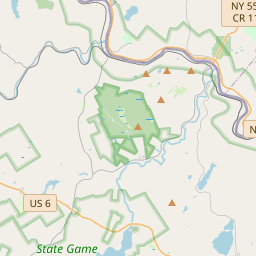Civil War Prison Train Wreck
Historical marker location:






April 12, 1861: The Civil War begins with the Confederate attack on Fort Sumter, located in South Carolina's Charleston Harbor.
April 15, 1861: President Abraham Lincoln issues a call for 75,000 volunteers to serve in the Union Army to suppress the rebellion.
May 24, 1861: The first major land battle, known as the First Battle of Bull Run (or First Battle of Manassas), takes place in Virginia. It ends in Confederate victory.
September 17, 1862: The Battle of Antietam in Maryland becomes the bloodiest single-day battle in American history, with heavy casualties on both sides. The Union forces, commanded by General George McClellan, manage to halt Confederate General Robert E. Lee's advance into Union territory.
January 1, 1863: President Lincoln issues the Emancipation Proclamation, declaring that all slaves in Confederate-held territories are to be set free. However, the proclamation does not immediately free all slaves in the United States.
July 1-3, 1863: The Battle of Gettysburg in Pennsylvania takes place, resulting in a significant Union victory and inflicting heavy casualties on Confederate forces. It marks a turning point in the war.
November 19, 1863: President Lincoln delivers the Gettysburg Address, emphasizing the principles of liberty, equality, and the preservation of the Union.
April 9, 1865: General Robert E. Lee surrenders to Union General Ulysses S. Grant at Appomattox Court House in Virginia, effectively ending the Civil War.
April 14, 1865: President Lincoln is assassinated by John Wilkes Booth while attending a play at Ford's Theatre in Washington, D.C.
May 10, 1865: Confederate President Jefferson Davis is captured, signaling the collapse of the Confederate government.
December 6, 1865: The Thirteenth Amendment to the United States Constitution is ratified, officially abolishing slavery throughout the country.
While this timeline provides an overview of key events, it is important to note that the Civil War spanned over four years, from 1861 to 1865, and encompassed numerous battles, campaigns, and political developments that shaped the course of American history.
Pennsylvania was home to the first commercially drilled oil well in the world, which was drilled in 1859 near Titusville.
The county was officially formed in 1814, carved out of parts of Wayne and Northampton counties. It was named after Zebulon Pike, an American explorer who died during the War of 1812. Pike County played a significant role in the development of the Delaware and Hudson Canal, which was constructed in the mid-19th century to transport coal from Pennsylvania to markets in New York City. The canal brought economic growth and prosperity to the region, attracting new industries and settlers.
During the American Civil War, Pike County faced challenges and divisions like many other regions in the country. While the county itself was not a major battleground, its residents were deeply affected by the conflict, with many men enlisting in the Union Army. After the war, Pike County experienced a period of rebuilding and recovery, with renewed growth in agriculture, logging, and tourism.
In the 20th century, Pike County continued to evolve and adapt to changing times. Today, it is known for its natural beauty, including the Delaware Water Gap National Recreation Area, which attracts visitors from near and far for outdoor activities such as hiking, boating, and fishing. Pike County also has a vibrant arts community, with galleries, music festivals, and theaters showcasing the creativity of its residents. With a combination of historical significance and a focus on natural resources, Pike County remains a unique and interesting part of Pennsylvania's history.
Pike County Timeline
This timeline provides a glimpse into the major events and milestones that have shaped the history of Pike County, Pennsylvania.
- 1814: Pike County, Pennsylvania was established on March 26, 1814, named after Zebulon Pike, an explorer.
- 1822: The settlement of Milford became the county seat of Pike County.
- 1851: The first railroad, the Delaware, Lackawanna and Western Railroad, reached Pike County.
- 1899: The Zane Grey Museum was built in Lackawaxen to honor the famous author.
- 1944: The completion of the Dingmans Ferry Bridge provided a new river crossing in the county.
- 1963: The Delaware Water Gap National Recreation Area was established, protecting a portion of Pike County's natural beauty.
- 1978: The Columns Museum opened in Milford, showcasing local history and artifacts.
- 2004: The Woodloch Resort, a popular destination in Pike County, celebrated its 50th anniversary.
- 2012: Pike County became known nationally as the location of the tragic Sandy Hook Elementary School shooting.